Ethernet Cable for the Internet of Things
Ethernet is the leading network protocol in LAN applications. Today, it’s gaining ground in transportation, automotive, and industrial applications, thanks to new cabling strategies.

In the early 1980s, at the start of the Ethernet era, coaxial cabling dominated and cheap yellow Ethernet cable became ubiquitous. In the 1990s, the focus shifted to cabling solutions based on symmetric, twisted-pair cabling and fiber optics. Initially, twisted-pair cabling relied on two-pair cables that utilized a wire pair as a 100Base-TX transmission and reception line. This principle, limited to a transfer rate of 100Mb/s, still represents the main transfer principle in industrial and automation systems today, and it’s often achieved using star-quad cable designs. In order to achieve higher transfer rates of 1Gb/s and 10Gb/s, today’s systems engineers utilize a transfer technique with four symmetric pairs in connection with eight-pole plug connectors.
The transfer of Ethernet with a single strand pair runs contrary to the technical development of Ethernet and its associated cabling. However, the development of new communication technologies, such as the Internet of Things (IoT), Industry 4.0, and cloud computing, are impacting network infrastructure, including the cables and connectors behind it.
Demands on this technology include high availability, short access times (including to distributed data and fast transport of this data from A to B), and challenges related to the secure transfer of large datasets in different application areas. At the same time, data transfer should remain cost-efficient. This means that devices, cables, and connecting hardware must achieve higher performance, be smaller and stronger, and possess a high degree of modularity and compatibility. Another trend in network technology and cabling is the increasing use of Ethernet protocols in new application areas, and particularly in transportation infrastructure. Traffic and transport platforms, such as rail, tram, bus, ship, and aircraft, are fitting their fleets with Ethernet automation protocols and sensor/actuator applications.

In the public transportation sector, Ethernet has been successfully employed for passenger information systems and WLAN services for many years. However, only recently has the private vehicle market recognized the advantages of Ethernet protocols for short-distance transmission routes. Single-pair Ethernet is the ideal solution for these applications. Standards have been developed for Gigabit Ethernet over single-pair balanced copper cabling, including IEEE 802.3bw, which defines parameters for 100Mb/s operation over single-pair balanced copper cabling (100BASE-T1). To achieve simultaneous transmission of data and energy, IEEE 802.3bu defines Power over Data Lines (PoDL), a principle suitable for single-pair transmission for remote powering). On the basis of these standards, chipsets, devices, cables, and connecting hardware are now being designed for integration in cars.
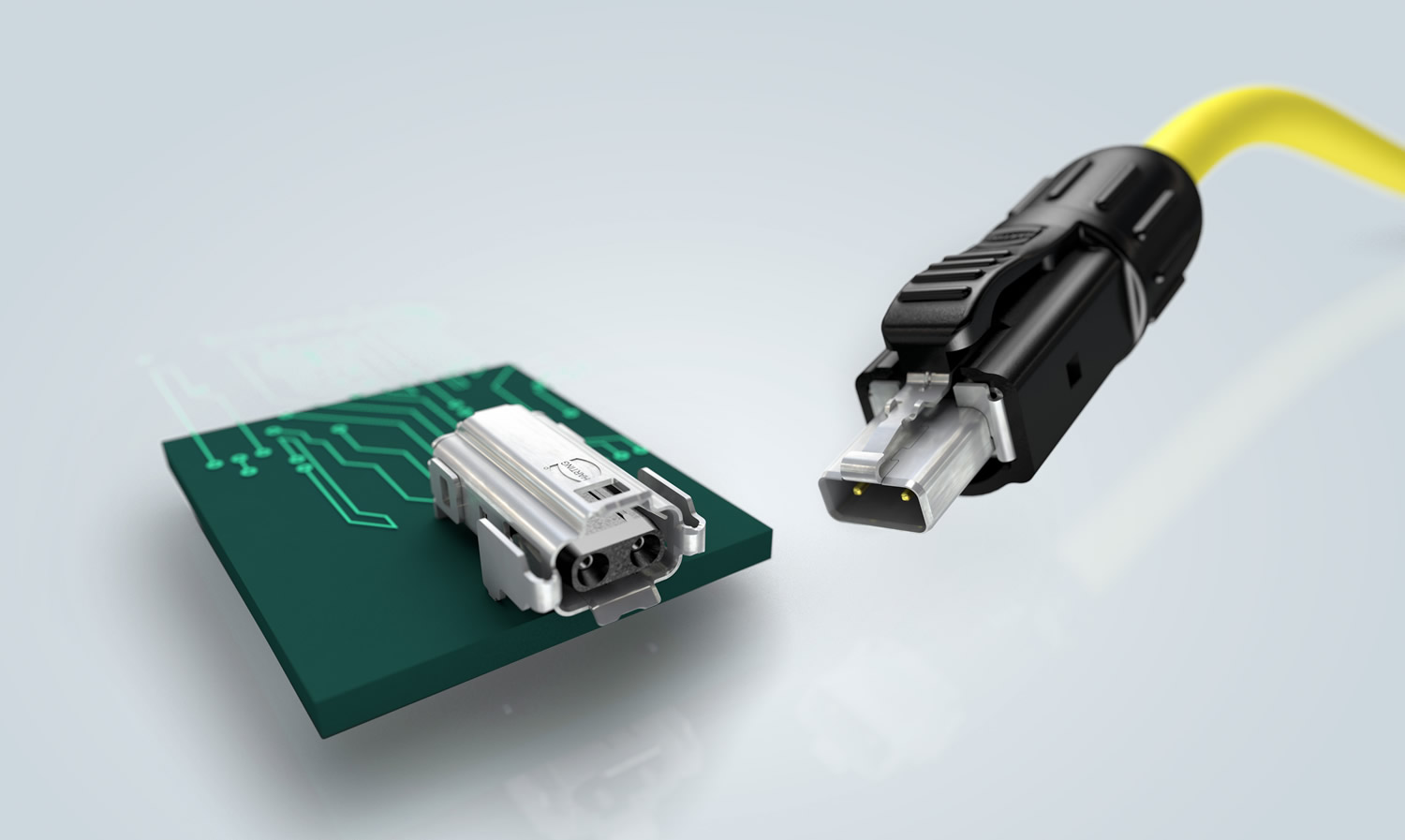
HARTING’S T1 Industrial Combo single-pair ethernet connector. SPE in machines, robots and in rail technology help to save weight and space.
Automotive cabling focuses on a transmission distance of up to 15 meters (49.21 feet) and generally needs to be produced in unshielded form due to weight and spatial constraints. Larger vehicles, such as trucks and busses, require longer transmission distances, of up to 40 meters (131 feet), and due to the associated higher EMC requirements, need to be fully shielded.
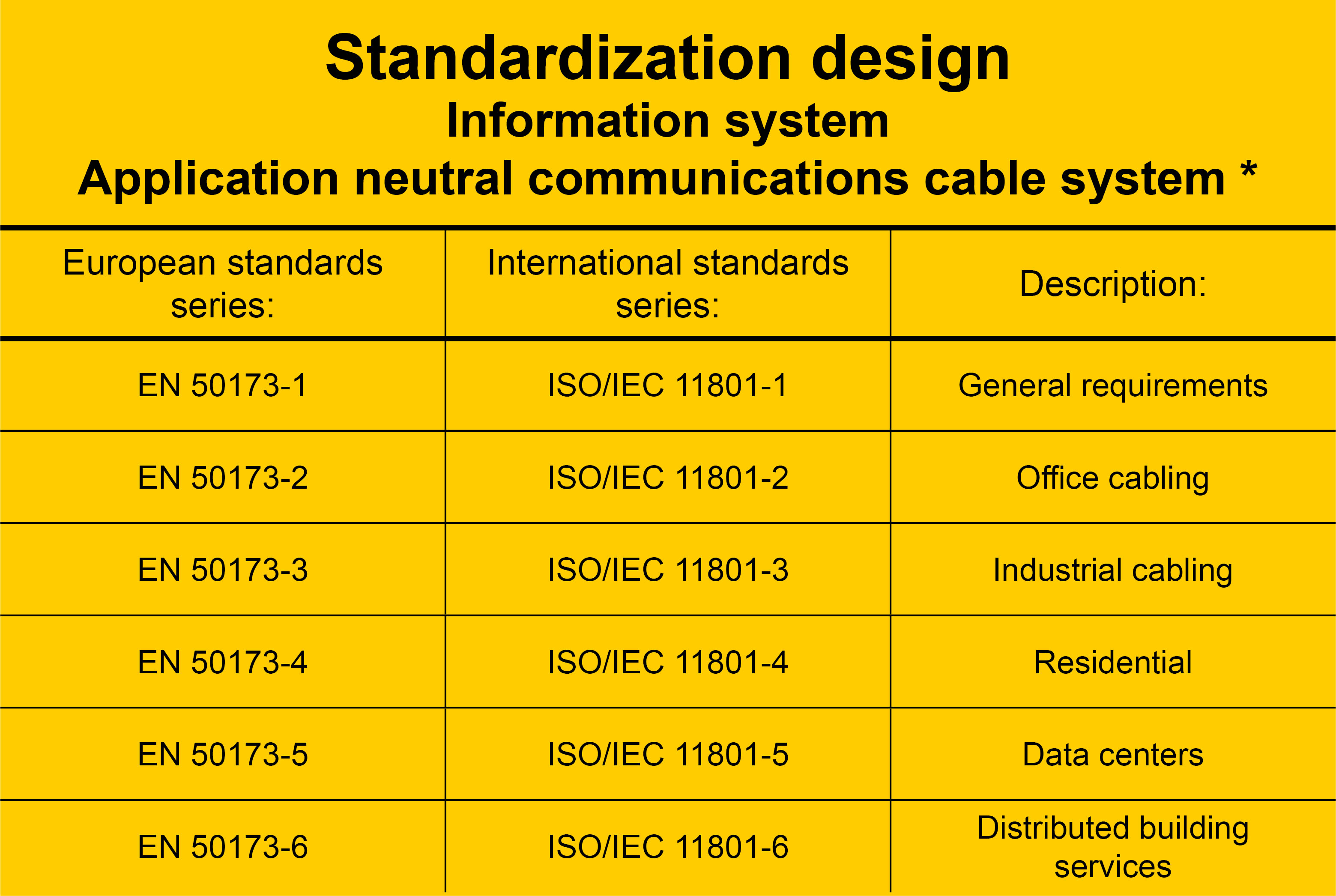
The theoretical basis for designing a 40-meter channel with single-pair cabling have already been worked out. This means that electronics and cabling manufacturers have all the necessary information on the development and design of chipsets, cables, and connectors at their disposal. The first chipsets are already on the market. A range of new products, which offer optimal support for individual applications, is expected. Accordingly, devices fitted with single-pair Ethernet are expected within one to two years. There are basically two ways to transmit Ethernet according to 1000BASE T1 over a single-pair cabling channel.
However, the use of four-pair data cables, which are capable of operating four single-pair transmission channels, should also be possible. This feature is also known as cable sharing. The transmission parameters should be defined for a frequency of up to 600MHz, and the corresponding international standard should be published by late 2019 or 2020.
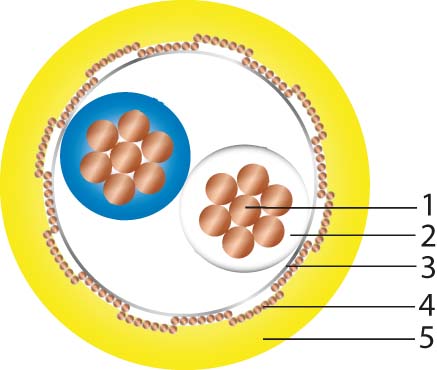
Important considerations for the design of these cabling components include:
- 100Ω impedance, 600MHz bandwidth, and the associated fixed parameters, such as insertion loss, return loss, alien cross-talk etc.
- Complete 360° shielding to ensure transmission quality under extreme EMC conditions
- Single-pair cable with the smallest possible outer diameter for space and weight savings in fixed and flexible installations
- Two-pole plug connectors in the smallest possible form factor for use in IP20 and IP65/67 environments, along with mutually compatible plug interfaces.
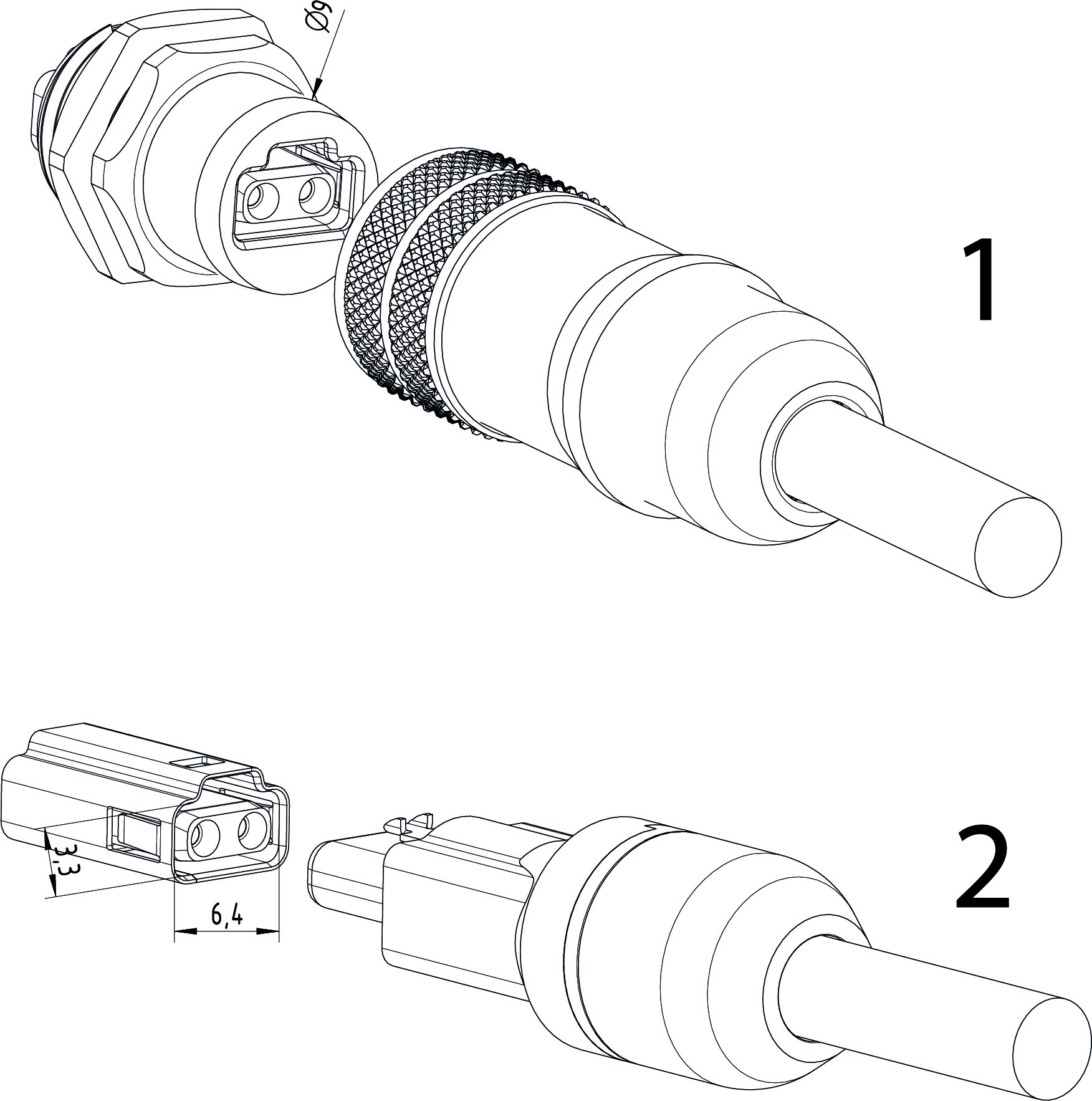
IP20 and IP67 T1 connector design for single-pair Ethernet
Following the application areas and performance of the single-pair cables, two-pole connectors are being standardized up to a minimum of 600MHz. Standardization of these connectors means that the mated interface, including a mechanical locking mechanism, will be fully defined. Definition of the interface ensures plug compatibility and guarantees that products from different manufacturers can be intermingled. It is expected that various designs of single-pair connectors will then be available in safety class IP20 to IP65/67, and the publication of this standard is also scheduled for 2019.
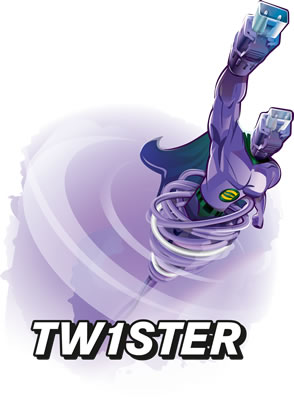
HARTING’S TW1STER brings data and power on one pair of wires to previously unattainable locations, thus challenging existing bus systems.
The increasing network requirements driven by the demands of Internet 4.0 and IoT rely on innovative and application- specific solutions. Single-pair Ethernet offers the ideal solution for cable-based communications infrastructure. Particularly for application areas in the transportation, automotive, industrial, and building management markets, this strategy represents a smart addition to the communications landscape, combining Gigabit Ethernet performance, transmission reliability, optimal handling, and remote powering, as well as space and weight savings.
By Matthias Fritsche, Product Manager Industrial Ethernet, and Rainer Schmidt, Business Development Structured Cabling, HARTING
Like this article? Check out our other Connection Basics, Ethernet, IoT, and 2019 articles, and our Automotive and Transportation market pages.
- Ethernet Cable for the Internet of Things - March 19, 2019





